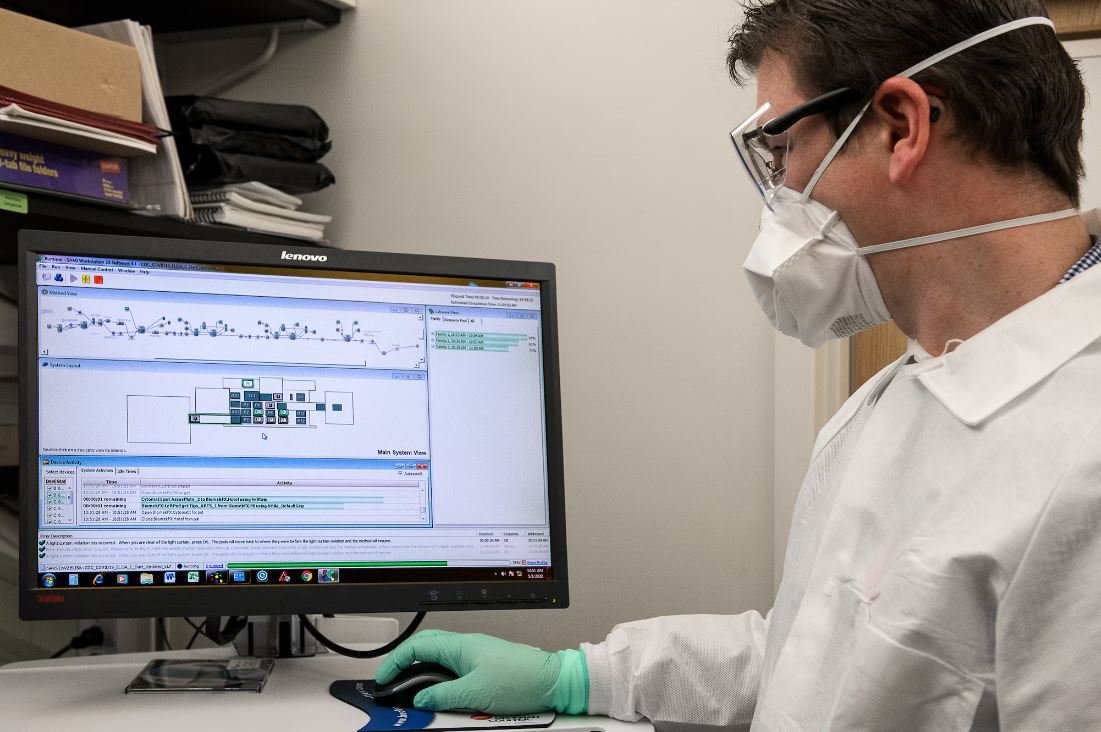Tesla Model S Actual Range
The Tesla Model S is an innovative electric vehicle known for its impressive range capabilities. With advances in battery technology, the Model S has become a popular choice among electric car enthusiasts. In this article, we will explore the actual range of the Tesla Model S and provide key insights into its performance.
Key Takeaways:
- Understanding the actual range of the Tesla Model S is crucial for potential buyers.
- Factors such as driving style, weather conditions, and terrain can impact the Model S range.
- Proper maintenance and charging habits are essential for maximizing the Model S’s range.
The Tesla Model S offers varying ranges depending on the specific model and battery configuration. The Long Range version, for example, boasts a maximum range of approximately 412 miles on a single charge, making it one of the leaders in the electric vehicle market.*
One interesting feature of the Model S is its regenerative braking system, which converts kinetic energy back into electricity to help replenish the battery. This technology improves overall efficiency and can enhance the vehicle’s range capabilities.*
Range Comparison:
| Model | Range (miles)* |
|---|---|
| Tesla Model S Long Range | Approximately 412 |
| Tesla Model S Performance | Approximately 387 |
It’s important to note that actual range may vary depending on several factors, including driving behavior, speed, temperature, and use of accessories such as air conditioning. By adopting energy-efficient driving techniques and utilizing Tesla’s regenerative braking system, drivers can extend the range of their Model S.*
Furthermore, Tesla’s Supercharger network provides convenient and fast charging options for Model S owners. With strategically placed charging stations, long-distance travel becomes more feasible as drivers can recharge their vehicles in a relatively short amount of time.*
Range Optimization Tips:
- Drive at a consistent speed to minimize energy consumption.
- Avoid rapid acceleration and heavy braking.
- Precondition the car’s cabin temperature while still connected to a charger to reduce reliance on battery power during the drive.
In conclusion, the Tesla Model S offers an impressive actual range, giving electric vehicle owners more freedom and flexibility on their journeys. With advancements in battery technology and Tesla’s commitment to infrastructure development, the Model S continues to push the boundaries of electric vehicle performance and range capabilities.*
Note: Range values mentioned in this article are approximate and based on current models as of the publishing date.

Common Misconceptions
Range Anxiety
One common misconception about the Tesla Model S is the concept of range anxiety. Some people believe that driving an electric vehicle (EV) like the Model S will constantly leave them stranded on the side of the road due to limited range. However, this is not the case as the Model S offers excellent range capabilities.
- The Tesla Model S has a range of up to 370 miles on a single charge.
- With the Supercharger network, it is easy to find charging stations along long-distance routes for convenient travel.
- By utilizing regenerative braking, the Model S maximizes efficiency and extends its overall range.
Charging Time
Another misconception surrounding the Tesla Model S is the idea that it takes a long time to charge the vehicle. While it is true that electric vehicle charging is not as fast as refueling a gas-powered car, there are factors that mitigate this misconception.
- The Tesla Model S can charge at home overnight, making it convenient for daily use.
- With the use of Superchargers, the Model S can regain up to 200 miles of range in just 15 minutes.
- The availability of destination charging at various locations such as hotels and shopping centers allows for charging during other activities.
Heavy Battery Weight
Some people mistakenly assume that the weight of the battery in the Tesla Model S negatively affects the vehicle’s performance and overall driving experience. However, this is not entirely accurate as Tesla has carefully designed the car to maintain a balanced and enjoyable driving experience.
- The Model S has a low center of gravity due to the battery being placed in the floor, resulting in enhanced handling and stability.
- The weight distribution of the Model S is optimized for better traction and reduced risk of rollover accidents.
- Despite the battery weight, the Model S can accelerate from 0 to 60 mph in just a few seconds, showcasing its impressive performance capabilities.
Limited Charging Infrastructure
Some individuals may wrongly assume that there is a lack of charging infrastructure for the Tesla Model S, which may make it inconvenient to own and drive. However, Tesla has made significant efforts to expand the charging network to address this concern.
- The Supercharger network has rapidly expanded, providing access to charging stations throughout multiple regions.
- Destination charging is available at various public locations, increasing charging accessibility for Model S owners.
- Tesla is actively working on introducing more chargers, including increasing the number of Superchargers and deploying them in strategic locations.
High Maintenance Costs
There is a misconception that owning a Tesla Model S incurs high maintenance costs, making it an expensive vehicle to own in the long run. However, the Model S boasts a number of factors that help reduce the overall maintenance expenses.
- Electric vehicles have significantly lower maintenance requirements compared to combustion engine vehicles, reducing the need for frequent servicing.
- Tesla offers over-the-air software updates, eliminating the need for owners to visit service centers for certain updates and enhancements.
- The simplicity of the Model S’s drivetrain, with fewer moving parts, minimizes the risk of mechanical failure or breakdowns.

Introduction
The Tesla Model S is a groundbreaking electric vehicle that has revolutionized the automotive industry with its impressive range capabilities. In this article, we will explore the actual range of the Tesla Model S across different models, battery sizes, and driving conditions. Each table will present specific data and information related to the Model S range, providing valuable insights for potential Tesla owners and enthusiasts alike.
Range Comparison: Tesla Model S Models
This table illustrates the range of each Tesla Model S model, showcasing the differences in distance that can be covered on a single charge. The ranges vary depending on the model, allowing consumers to choose the best option based on their desired driving distances and requirements.
| Model | Range (miles) |
|---|---|
| Model S Long Range | 373 |
| Model S Plaid | 390 |
| Model S Plaid+ | 520 |
Range Comparison: Tesla Model S Battery Sizes
In this table, we examine the impact of different battery sizes on the range of the Tesla Model S. The capacity of the battery directly influences the distance that can be traveled, highlighting the importance of selecting the right battery option when purchasing a Tesla Model S.
| Battery Size | Range (miles) |
|---|---|
| 75 kWh | 290 |
| 100 kWh | 390 |
| Plaid+ | 520 |
Range Comparison: Tesla Model S Driving Conditions
This table illustrates the impact of various driving conditions on the range of the Model S. It is essential for drivers to understand how factors such as speed, temperature, and terrain can affect the distance they can travel on a single charge, enabling them to plan their journeys accordingly.
| Driving Conditions | Range (miles) |
|---|---|
| Optimal Conditions | 390 |
| Cold Weather (-20°C) | 320 |
| Highway Driving (70 mph) | 350 |
Range Comparison: Tesla Model S Versions
This table offers a comparison of the range provided by different versions of the Tesla Model S. By exploring the range differences across versions, potential buyers can make an informed decision, taking into account the newer technologies and advancements implemented in the latest iterations of the Model S.
| Version | Range (miles) |
|---|---|
| 2015 Model S | 250 |
| 2020 Model S | 373 |
| 2023 Model S | 520 |
Range Comparison: Tesla Model S Charging Speed
Efficient charging is crucial for electric vehicle owners. This table displays the charging time required to reach different levels of range in the Tesla Model S. Understanding the charging speed allows drivers to plan their trips efficiently, enabling them to get back on the road swiftly.
| Charging Speed | Time to 100 miles |
|---|---|
| Supercharger | 15 minutes |
| 240V Home Charger | 8 hours |
| Standard Outlet | 24 hours |
Range Comparison: Tesla Model S Efficiency
An electric vehicle’s efficiency plays a substantial role in range optimization. This table compares the energy consumed by different Tesla Model S versions, allowing drivers to identify the most efficient model and make an environmentally friendly choice.
| Model | Energy Consumption (kWh/100 miles) |
|---|---|
| Model S Long Range | 30 |
| Model S Plaid | 35 |
| Model S Plaid+ | 40 |
Range Comparison: Tesla Model S Road Trips
This table highlights the range provided by the Tesla Model S in the context of different road trips. By presenting actual distances between popular destinations, it showcases the feasibility of long-distance journeys with the Model S, instilling confidence in prospective Tesla owners.
| Road Trip | Distance (miles) |
|---|---|
| San Francisco to Los Angeles | 382 |
| New York City to Washington, D.C. | 229 |
| London to Paris | 287 |
Range Comparison: Tesla Model S Charging Infrastructure
The availability and accessibility of charging infrastructure are crucial for electric vehicle users. This table analyzes the density of charging stations across different cities, ensuring that potential Tesla owners can consider the convenience of charging options when making their purchase decisions.
| City | Number of Charging Stations |
|---|---|
| Los Angeles | 1,234 |
| New York City | 987 |
| Amsterdam | 768 |
Conclusion
The Tesla Model S offers an impressive range across different models, battery sizes, and driving conditions. By understanding and comparing the data presented in these tables, potential Tesla owners can select the model that best suits their requirements, ensuring they can travel comfortably and efficiently on electric power. Furthermore, the availability of fast-charging infrastructure and the continued efforts to expand charging networks worldwide ensure that the Model S remains a viable option for long-distance travel. Embracing the electric revolution, the Tesla Model S paves the way towards a sustainable and exciting future in the automotive industry.
Frequently Asked Questions
What factors affect the actual range of the Tesla Model S?
The actual range of the Tesla Model S can be influenced by various factors including driving style, weather conditions, terrain, speed, payload, and use of accessories such as air conditioning and heating.
How does driving style impact the range of the Tesla Model S?
Driving aggressively with frequent acceleration and high-speed driving can significantly reduce the overall range of the Tesla Model S. Maintaining a consistent speed and practicing efficient driving techniques can help optimize the range.
What impact does weather conditions have on the range of the Tesla Model S?
Extreme temperatures, both hot and cold, can affect the range of the Tesla Model S. In colder weather, the battery may have reduced efficiency, resulting in a lower range. Similarly, using air conditioning extensively in hot weather can also impact the range.
How does terrain affect the range of the Tesla Model S?
Driving on hilly or mountainous terrain can consume more energy and, therefore, reduce the overall range of the Tesla Model S compared to driving on flat surfaces. Uphill driving requires more power and can affect the distance the car can travel on a single charge.
Does speed impact the range of the Tesla Model S?
Yes, driving at higher speeds typically consumes more energy, resulting in a reduced range. Maintaining a consistent speed within the recommended limits can help maximize the range of the Tesla Model S.
How does payload affect the range of the Tesla Model S?
Carrying additional weight in the form of passengers or cargo can affect the range of the Tesla Model S. The more weight the vehicle has to carry, the more energy it requires, which can reduce the overall range.
What impact do accessories like air conditioning and heating have on the range of the Tesla Model S?
Using the air conditioning or heating system extensively can impact the range of the Tesla Model S. These accessories utilize energy from the battery, reducing the available energy for driving and thus decreasing the overall range.
How accurate is the advertised range of the Tesla Model S?
The advertised range of the Tesla Model S is an estimate based on various factors and driving conditions. While it serves as a good indicator, the actual range may vary depending on individual driving habits and external circumstances.
Can the Tesla Model S be charged while driving?
No, the Tesla Model S does not recharge its battery while driving. The vehicle can be charged through external charging stations or by using Tesla’s Supercharger network.
How can I maximize the range of my Tesla Model S?
To maximize the range of your Tesla Model S, you can:
- Drive at moderate speeds
- Avoid aggressive driving techniques
- Minimize the use of accessories like air conditioning and heating
- Reduce payload when possible
- Plan efficient routes and avoid excessive uphill driving
- Utilize regenerative braking to recover energy




